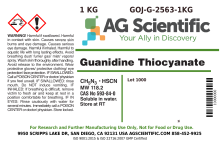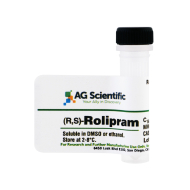Geldanomycin
30562-34-6
560.6
C29H40N2O9
DMSO
-20°C
Geldanamycin is a benzoquinone ansamycin antibiotic which binds to Heat Shock Protein 90 and alters it function. HSP90 client proteins play important roles in the regulation of the cell cycle, cell growth, cell survival, apoptosis, and oncogenesis.
0.1 lbs
Research or further manufacturing use only, not for food or drug use.



